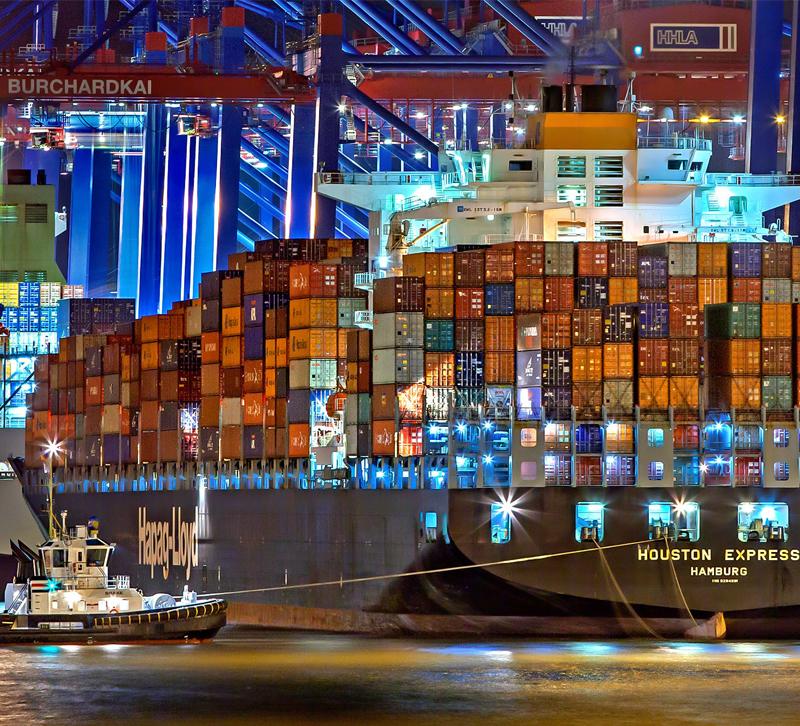"Tariffs are the Greatest," President Trump said in a tweet Tuesday morning. If you're a furniture or lighting retailer, tariffs are anything but great.
The Trump administration plans to impose a tariff on furniture, lighting fixtures and components imported from China — a move that will likely hit retailers and consumers hard. In an industry that mostly depends on consumer discretionary spending, a price increase could delay and even halt purchases or decrease the number of goods purchased. If most of your consumers are middle- and lower-income, then you may be in for a major loss of customers.
Yesterday, the European Commission's President, Jean-Claude Juncker, met with Trump to discuss tariffs between the U.S. and the European Union (E.U.). In preparation, European Commission prepared retaliatory tariffs on $20 billion worth of U.S. goods, according to Reuters, while Trump continued to threaten to tax imported cars. Thankfully, the two were able to come to a standstill and halt the building trade war between them. The U.S. will not impose a 20 percent tariff on European cars and will reconsider the steel and aluminum tariffs, and in return, the E.U. will "make unspecified purchases" of soybeans and liquified natural gas from the U.S. The two leaders said they would be working towards removing all tariffs between them.
A decent outcome overall for both sides, but the tentative deal (nothing was signed, steel and aluminum tariffs on both sides continue) won't erase the harm done by tariffs on China, Mexico and Canada.
For many of your customers, tariffs may not seem like something to worry about. The administration took care to avoid placing tariffs on commodity products — products that consumers have to by regularly. If the trade wars continue, consumers will definitely notice.
According to estimates from Erica York and Kyle Pomerleau at the independent tax policy nonprofit Tax Foundation, "the tariffs enacted so far by the Trump administration would reduce long-run GDP by 0.06 percent ($15.7 billion) and wages by 0.04 percent and eliminate 48,585 full-time equivalent jobs. If the Trump administration enacts additional tariffs on automobiles and parts and additional Chinese tariffs, GDP would fall by an additional 0.36 percent ($89.6 billion), resulting in 0.26 percent lower wages and 277,825 fewer full-time equivalent jobs."
Clearly, tariffs could drastically affect the economy. The 2018 State of Industry report from the American Society of Interior Designers said a trade war "could push the United States into a recession by 2019 or 2020."
If you want to see how tariffs are already affecting certain industries, here are three facing major problems with them.
Whirlpool and home appliances
On the surface, tariffs may seem like a good idea, but they have a way of backfiring on companies. Perhaps no one knows this better than Whirlpool, the home appliance manufacturer. Whirlpool's experience shows that even though one tariff might help you, there's a good chance all the other tariffs will likely cancel out that benefit and leave you in the red.
In early 2018, Trump raised tariffs on imported washing machines and dryers, handing an advantage to U.S.-made washers and dryers. Whirlpool and other manufacturers celebrated the news, but the celebration didn't last long.
In its second-quarter earnings report, Whirlpool reported a loss of $657 million, despite reporting a profit in the same quarter last year, according to CBS. The price of washing machines is now 20 percent higher due to a combination of tariffs on imports and on parts imported from China and used in domestic production.
Home building
For those buying a home, the lumber used to construct it may cause a significant price increase. About 28 percent of lumber sales in the U.S. comes from Canada, and because of the tariffs on Canadian products, the National Home Builders Association (NHBA) sees some major problems for consumers.
"Rising lumber prices have increased the price of an average single-family home by nearly $9,000 and added more than $3,000 to the price of the average multifamily unit," Randy Noel, Chairman of NHBA, said in a prepared statement after meeting with Commerce Secretary Wilbur Ross to discuss the impact of tariffs.
The lumber industry serves as a cautionary tale for relying solely on American industries and pushing out other competitors. According to CBS News, wildfires and "other supply chain issues" drove up the price of U.S. lumber by 40 percent since last year. Builders have had to eat those costs on current projects and raise their prices on future ones.
While new homes are still going up, builders may build smaller or homes or simply fewer homes. For lighting showrooms that do business with builders, that may translate to smaller orders or fewer orders altogether. Furniture showrooms may also see less traffic in their showrooms as well.
Agriculture
A report from NPR noted that pork exports to China from the U.S. have all but dried up. Speaking to NPR, Mary Lovely, an economist at Syracuse University, said the U.S. Department of Agriculture "has reported zero weekly export sales of pork to China" in recent weeks. After two rounds of retaliatory tariffs, pork tariffs range between 60 and 72 percent.
Other farmers are facing similar problems. As a result, the Trump administration is planning a $12 billion package to aid farmers affected by tariffs. While the E.U. says it will be buying more soybeans from the U.S., it's unclear how much and whether or not that can offset the loss of the massive Chinese market.
Now of course, your showroom doesn't sell pork or soybeans, so maybe this doesn't seem like an issue, but you might be selling to these consumers. If their farming businesses fail, you may as well.
So tell us: How are you feeling about tariffs these days? How do you think they'll impact your business? Share with us in the comments!
Photo: Julius Silver from Pexels







